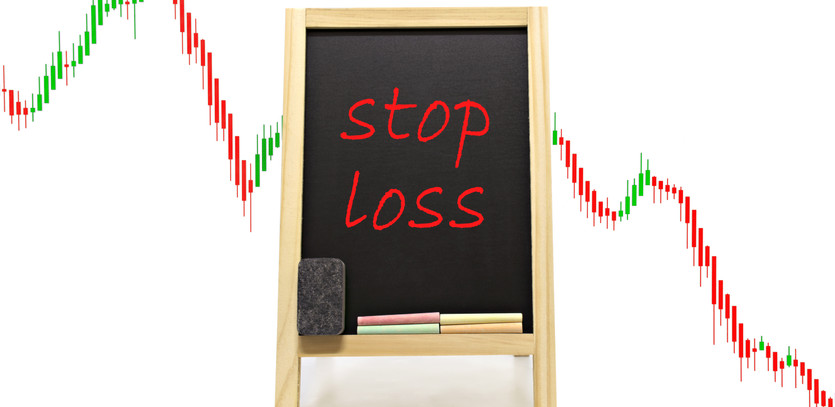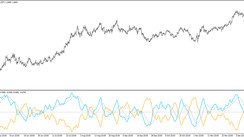To thrive as a day trader, it's pivotal to incorporate stop-loss orders into your trading strategy. Providing a safety net against severe slippage, stop-loss orders cap your potential loss for each trade. But, to make the most of stop-loss orders, it's crucial to understand how to compute your stop-loss and pinpoint where exactly to position your stop-loss order.
The Core Tenets of Stop-Loss Orders
Acting as an early warning system during stock trading, stop-loss orders pull the plug when your market direction prediction falls short. These orders can serve you well when properly computed and deployed, as they prompt you to exit when a stock slips beneath your tolerance level. You can calculate stop-loss using the amount at risk in cents, ticks, pips, or dollars. It's important to remember that not all trades will suit the same stop-loss order; they need personal tailoring but the math involved is invaluable.
Determining the Ideal Position for Stop-Loss
In your stop-loss strategy, the ideal stop-loss position is where, if touched, it signals you were incorrect about the market's trajectory. It's unlikely you'll always time your trades flawlessly. Don't expect the price to always surge immediately after purchasing a stock. Hence, after purchasing, allow the trade some room to fluctuate before rising. A stop-loss aims to exit a position if the price plummets significantly, indicating that you had misjudged the market's direction.
A standard practice when buying stock is to position your stop-loss price below a recent price bar low, also known as a "swing low". The specific price bar chosen for your stop-loss will vary based on your strategy, but it forms a logical stop-loss position, as the price has rebounded from this low point. If the price dips below this low, it could suggest a mistaken market direction assumption, and it's time to exit the trade. Delving into charts and looking for visual cues, in addition to number crunching, can be beneficial.
Similarly, when short-selling, set a stop-loss above a recent price bar high, or a "swing high". Just like stop-loss orders for buys, the choice of price bar for your stop-loss will depend on your strategy, but this strategy provides a sensible stop-loss placement, as the price retreated from this high point. The process of identifying the swing high is akin to seeking the swing low.
Methods to Calculate Stop-Loss Placement
There are two principal ways to compute your stop-loss placement: through cents, ticks, or pips at risk, and account-dollars at risk. The method focusing on account-dollars at risk yields more crucial insights as it reveals how much of your account you've gambled on the trade.
The cents, pips, or ticks at risk method is useful for simple data transmission. For instance, if your stop is at X, and long entry is at Y, you calculate the difference like so:
Y - X = cents/ticks/pips at risk
In a scenario where you buy a stock at $10.05 and place a stop-loss at $9.99, then you have six cents at risk for each share you own. If you short the EUR/USD forex currency pair at 1.1569 and place a stop-loss at 1.1575, you have 6 pips at risk per lot.
This value is helpful if you need to inform someone about your orders or how far your stop-loss is from your entry price. However, it doesn't disclose how much of your account you've put at risk on the trade.
To compute the dollars at risk from your account, you need to know the cents, ticks, or pips at risk and your position size. For instance, in the stock example, you have $0.06 of risk per share. Suppose you have a position size of 1,000 shares. Your total risk on the trade becomes $0.06 x 1,000 shares or $60 (plus commissions).
In the EUR/USD example, if you are risking 6 pips, and have a 5 mini lot position, calculate your dollar risk as:
Pips at risk X Pip value X position size
OR
6 pips at risk X $1 per pip X 5 mini lots = $30 risk (plus commission)
In a futures position, your dollar risk calculation resembles a forex trade, except you replace pip value with tick value. If you buy the E-mini S&P 500 (ES) at 1,254.25 and place a stop-loss at 1,253, you are risking 5 ticks, and each tick is worth $12.50. If you buy three contracts, your dollar risk would be:
5 ticks X $12.50 per tick X 3 contracts = $187.50 (plus commissions)
Managing Risk in Your Account
Your dollar risk should represent a small fraction of your total trading account. Ideally, the amount you risk should fall below 1% of your account balance, and never exceed 2%.
As an example, a forex trader places a 6-pip stop-loss order and trades 5 mini lots, resulting in a $30 risk for the trade. If risking 1%, they have risked 1/100 of their account. So, what should their account size be if they're willing to risk $30 on a trade? You calculate this as $30 x 100 = $3,000. To risk $30 on the trade, the trader should have at least $3,000 in their account to keep the risk to the account minimal.
Quickly reverse the calculation to see how much you can risk per trade. If you have a $5,000 account, you can risk $5,000 ÷ 100, or $50 per trade. If your account balance is $30,000, you can risk up to $300 per trade (though you may choose to risk less).
In Conclusion
It's critical to always use a stop-loss, and scrutinize your strategy to determine the ideal placement for your stop-loss order. Depending on your strategy, your cents, pips, or ticks at risk may vary with each trade, as the stop-loss should be strategically placed for each trade.
The stop-loss should only be hit if your prediction about the market's direction was incorrect. It's necessary to know your cents, ticks, or pips at risk on each trade because it enables you to calculate your dollars at risk, which is a much more crucial calculation guiding your future trades. Your dollars at risk on each trade should ideally be capped at 1% or less of your trading capital, so that a loss—even a series of losses—won't significantly drain your trading account.
What is a trailing stop-loss order and how does one use it?
A trailing stop-loss order operates similarly to a regular stop-loss order, but it's not static. Instead of being tied to a specific selling price, a trailing stop-loss order adjusts with market movements and is linked to the current price. If the stock price rises, the price that would trigger a trailing stop-loss order increases proportionally. For example, a trader may decide to sell when the stock price declines by $1. If the price starts at $22, this trailing stop-loss order will trigger at $21. If the stock price jumps to $25, then the trailing stop-loss order will trigger at $24. If a trader leaves the order open indefinitely, it will update automatically until a decline triggers it. These triggers can be measured in dollars or percentages.
Where should one set stop-loss orders in a buy-and-hold investment strategy?
Some long-term investors might not use stop-losses at all if they have strong confidence in the long-term financial health of the business, and therefore do not mind holding through any level of price decline. Others may plan to buy and hold but want to try to buy at the absolute bottom of a downtrend, so they'll use a stop-loss to sell if the price continues to decline after their purchase.
Why would a stop-loss order be placed above the purchase price?
Some traders "walk up stops" after entering a trade. When price action consolidates and then breaks higher, a trader may decide to adjust their stop-loss sell order so that it's just below the latest consolidation point. This is especially useful for swing and short-term traders who aren't interested in holding a stock through ups and downs—they want to exit the trade as soon as the trend changes.





